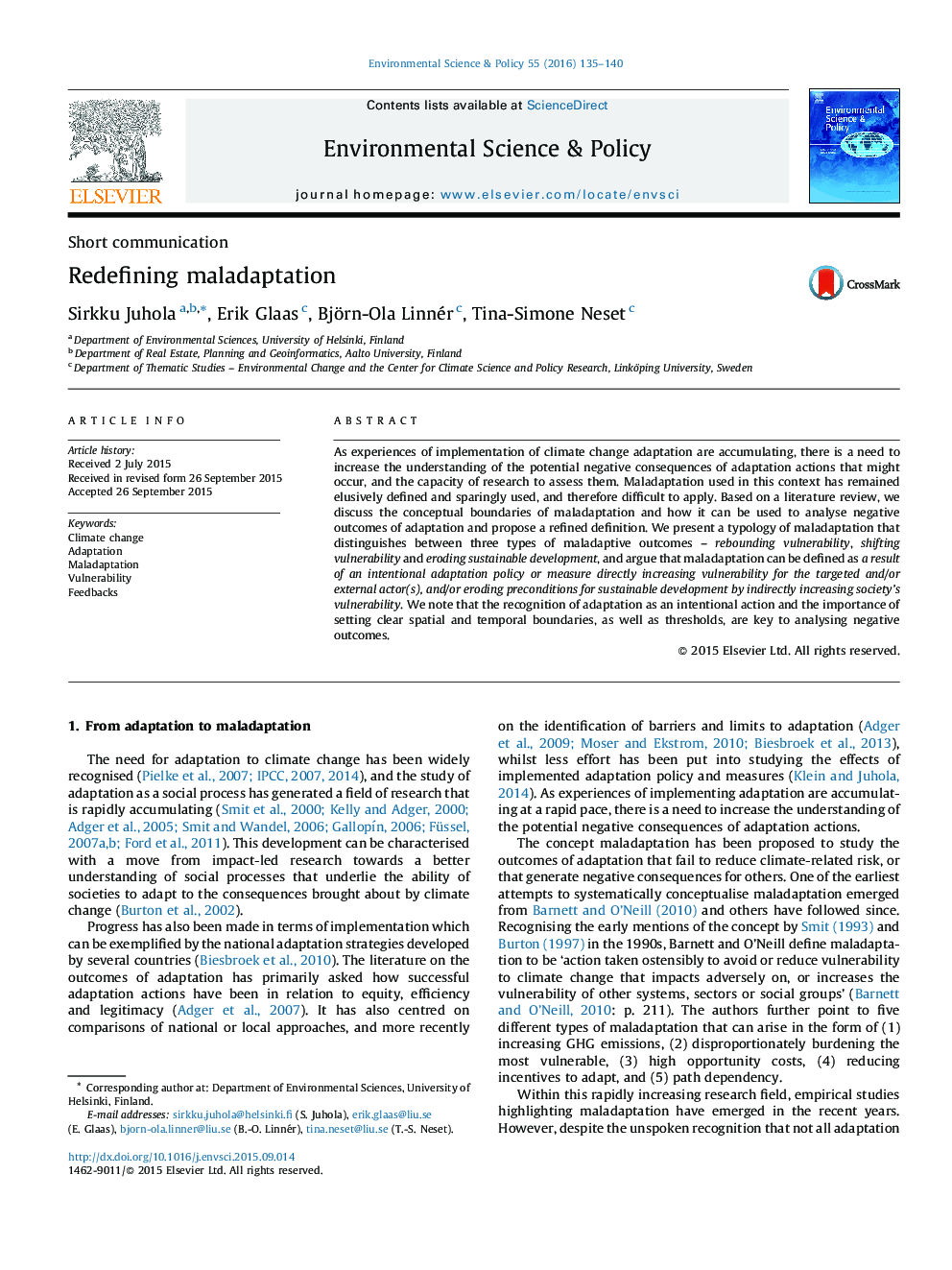| Article ID | Journal | Published Year | Pages | File Type |
|---|---|---|---|---|
| 10504559 | Environmental Science & Policy | 2016 | 6 Pages |
Abstract
As experiences of implementation of climate change adaptation are accumulating, there is a need to increase the understanding of the potential negative consequences of adaptation actions that might occur, and the capacity of research to assess them. Maladaptation used in this context has remained elusively defined and sparingly used, and therefore difficult to apply. Based on a literature review, we discuss the conceptual boundaries of maladaptation and how it can be used to analyse negative outcomes of adaptation and propose a refined definition. We present a typology of maladaptation that distinguishes between three types of maladaptive outcomes - rebounding vulnerability, shifting vulnerability and eroding sustainable development, and argue that maladaptation can be defined as a result of an intentional adaptation policy or measure directly increasing vulnerability for the targeted and/or external actor(s), and/or eroding preconditions for sustainable development by indirectly increasing society's vulnerability. We note that the recognition of adaptation as an intentional action and the importance of setting clear spatial and temporal boundaries, as well as thresholds, are key to analysing negative outcomes.
Related Topics
Physical Sciences and Engineering
Energy
Renewable Energy, Sustainability and the Environment
Authors
Sirkku Juhola, Erik Glaas, Björn-Ola Linnér, Tina-Simone Neset,
